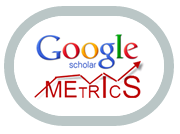THEORETICAL FOUNDATIONS OF STRATEGIC PERSONNEL MANAGEMENT TO SUPPORT INNOVATIVE DEVELOPMENT
Resumo
The article analyzes theoretical concepts of innovation management, the nature and role of knowledge as the initial component of innovation and the higher education system as a factor in the innovative development of the economy. Using higher technical (engineering) education as an example, the theoretical and methodological characteristics of strategizing and the conceptual basis for the strategy of professional training of personnel, as well as the main provisions of the concept of strategic management of personnel support for innovative development of the economy, have been developed. An analysis of personnel support for innovative development is carried out based on a review of global trends and national characteristics of innovative and technological development and the introduction of digital technologies. The factors of expanded reproduction of personnel innovation potential and the resource capabilities of personnel support for innovative development of the economy have been determined. A concept of coordinating state, corporate, and individual interests based on the development of a system of strategic partnership between educational organizations of higher technical education and innovative enterprises in innovative development has been formulated. A system and methods of strategic management of personnel support for innovative development of the economy have been formulated.
Texto completo:
PDF (English)Referências
REFERENCES
BERNAL, J. D. (1939). The social function of science. MIT Press.
KUHN, T. S. (1962). The structure of scientific revolutions. University of Chicago Press.
MENSCH, G. O. (1979). Stalemate in technology: Innovations overcome the depression. Ballinger Publishing Company.
SOLOW, R. M. (1956). A contribution to the theory of economic growth. The Quarterly Journal of Economics, 70(1), 65-94.
TWISS, B. (1992). Managing technological innovation. Longman.
PHELPS, E. S. (1968). Money-wage dynamics and labor-market equilibrium. Journal of Political Economy, 76(4), 678-711.
SCHUMPETER, J. A. (1942). Capitalism, socialism, and democracy. Harper & Brothers.
BELL, D. (1973). The coming of post-industrial society: A venture in social forecasting. Basic Books.
DRUCKER, P. F. (1954). The practice of management. Harper & Brothers.
TOFFLER, A. (1970). Future shock. Random House.
MALONE, M. S. (1985). The microprocessor: A biography. Springer.
PORTER, M. E. (1980). Competitive strategy: Techniques for analyzing industries and competitors. Free Press.
PHELPS, E. S. (1968). Money-wage dynamics and labor-market equilibrium. Journal of Political Economy, 76(4), 678-711.
EDVINSSON, L., & MALONE, M. S. (1997). Intellectual capital: Realizing your company’s true value by finding its hidden brainpower. HarperBusiness.
GALBRAITH, J. K. (1958). The affluent society. Houghton Mifflin.
POPPER, K. R. (1959). The logic of scientific discovery. Hutchinson.
JOHNSTON, B., & WEBBER, S. (2003). Information literacy in higher education: A review and case study. Studies in Higher Education, 28(3), 335-352.
ETZKOWITZ, H., & LEYDESDORFF, L. (2000). The dynamics of innovation: From National Systems and “Mode 2” to a Triple Helix of university–industry–government relations. Research Policy, 29(2), 109-123.
MACNEILL, S., JOHNSTON, B., & SMYTH, K. (2014). Critical information literacy in the university curriculum: Application of an e-framework for supporting strategic learning and teaching. Journal of Information Literacy, 8(2), 78-95.
Denison, E. F. (1962). The sources of economic growth in the United States and the alternatives before us. Committee for Economic Development.
SCHULTZ, T. W. (1961). Investment in human capital. The American Economic Review, 51(1), 1-17.
IASECHKO, M., RABIICHUK, S., MYKHALCHENKO, N., PAVLUSHCHENKO, N., & DZHURYLO, A. (2024). Pedagogical conditions for the formation of communicative competence of students of higher education. Journal of Higher Education Theory and Practice, 24(5), 30-36. North American Business Press.
IASECHKO, S., & IASECHKO, M. (2024). The role and impact of artificial intelligence in modern education: Analysis of problems and prospects. Review of Artificial Intelligence in Education, 5.
IASECHKO, M., YUDINA, S., KHARKOVA, Y., KOROTUN, O., & PAVLUSHCHENKO, N. (2024). Judgment and implementation of academic fraud practices by students of higher education. Knowledge & Diversity, 15(38), 95-108.
RIBEIRO, T. DE L., & ANTÔNIO DE LIMA, A. (2022). Environmental, Social and Governance (ESG): Mapeamento e Análise de Clusters. RGC - Revista De Governança Corporativa, 9(1), e0120. https://doi.org/10.21434/IberoamericanJCG.v9i1.120
KELLI MORIN, S., & ISMAEL MAURI GEWEHR RAMADAM (2020). Gestão de Riscos como Instrumento de Governança Corporativa em Sociedades de Economia Mista. RGC - Revista De Governança Corporativa, 7, e065. https://doi.org/10.21434/IberoamericanJCG.v7i.65
DOI: http://dx.doi.org/10.21902/Revrima.v2i44.7121
Apontamentos
- Não há apontamentos.
Revista Relações Internacionais do Mundo Atual e-ISSN: 2316-2880
Rua Chile, 1678, Rebouças, Curitiba/PR (Brasil). CEP 80.220-181



